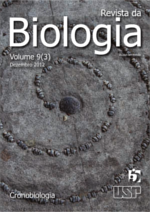Interaction between photic and social synchronizers: repercussions for human health
DOI:
https://doi.org/10.7594/revbio.09.03.13Keywords:
Light/dark cycles, Exposure to artificial light, Shift work, Transmeridian travel, Sleep phase delay, Human healthAbstract
The light/dark cycle is considered the most important zeitgeber of mammals’ rhythms. For humans, however, the advent of electric lighting changed synchronization patterns. The exposure to artificial light during the dark phase, especially due to work and evening school, and TV/internet habits, has been associated with desynchronization of circadian rhythms. A variety of basic and applied research has demonstrated the consequences of being out-of-sync for health. The objective of this paper is to discuss the main consequences of the interaction between social synchronizers and the natural light/dark cycle, especially considering studies on the consequences for the human health in Brazilian populationsDownloads
Download data is not yet available.
Downloads
Published
2018-04-23
Issue
Section
Ensaio
License
We ensure that our journal does not retain any copyright and that these are exclusive of the author(s) of the text. In that sense, we intend to break any restrictions to the published material and to achieve more intensely our goal of communicating science.
How to Cite
Pereira, Érico F., Anacleto, T. S., & Louzada, F. M. (2018). Interaction between photic and social synchronizers: repercussions for human health. Revista Da Biologia, 9(3), 68-73. https://doi.org/10.7594/revbio.09.03.13






